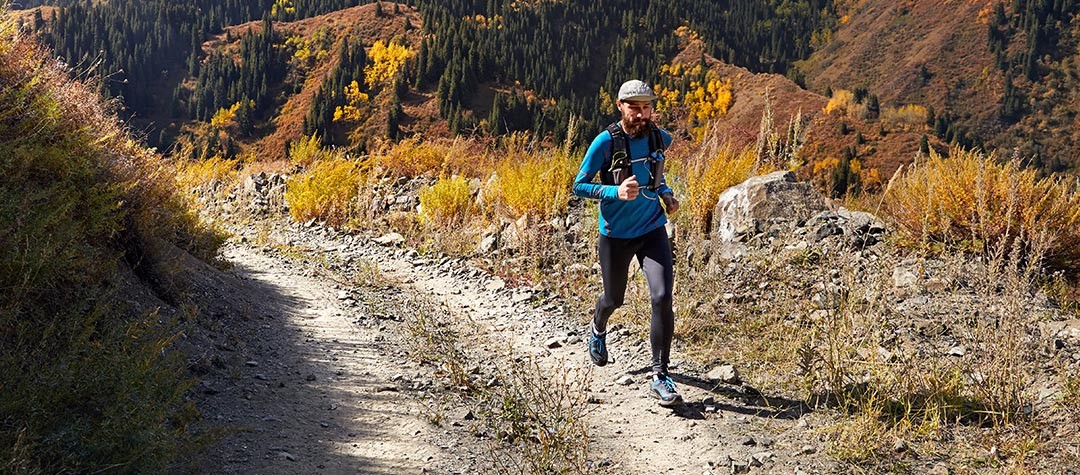If you’ve just started running, or you’re returning to the sport after a break, you may well be at the stage now where you fancy a change of scene. That’s great and different surfaces will definitely help your fitness and technique. But there a few things you need to bear in mind before you head for the great outdoors.
1. Balancing act
When you launch yourself at a trail or off road track, one of the first things you will notice is the additional workload on your ankles and your core. Having to literally roll with the punches of uneven surfaces and obstacles, means the potential to sprain an ankle is high. If you can strengthen this area and your core before you hit the trails, it will definitely help. Doing balancing exercises on one leg is great preparation for adding more stability in the ankle area and the plank and other core exercises are a great way of shaping up in advance.
For off road running you need to think about your technique. Your stride pattern will need to be varied to cope with the differing gradients and uneven surfaces underfoot. And if you are a shuffler, you will really need to make a conscious effort to pick up your feet, or you might have to pick yourself up off the floor.
2. Fix your stare
The best running techniques involve running with your head up and looking into the distance, but with off road running you need to be looking a little closer to the ground. There’s no point being able to see the hill in the distance when you don’t spot the low-hanging branch sticking out of the hedge 10 feet in front of you. You need to be able to see potential hazards and avoid them, so looking ahead about 6 strides in front of you should give you enough time to react and hurdle an obstacle.
3. Slow down
You will need to slow down to run off road. Think about it. Running on a flat open road at speed is great, but you just can’t match that speed on a narrow, rock strewn trail at the top of a hill. The chances for a fall are already high. Don’t increase them by hurtling along an ungroomed trail, only to go head over heels because you couldn’t slow down in time to avoid a rock. Be sensible and embrace the slower speed, because what you lose in speed, you will more than make up in strengthening of major muscles, your core and your ankles. It’s different to the road and that’s why it’s all good. You’re not aiming for mileage because you should be measuring your workout in terms of time on your feet and effort required.
4. Call a friend
This might be the perfect time to call a friend and go running together . If you’re just going to go running on a trail in your local park which doesn’t involve any significant additional challenge, then no problem. But if you are thinking of being more ambitious and heading into the wilderness, where the terrain can be more unpredictable and unfamiliar, it’s probably safer to go out with someone. Make sure you take plenty of provisions with you (food and drink) and have a phone with you too. Tell someone where you are planning to be and what time you expect to be back.
5. Do your homework
In an ideal world it’s a good idea to learn as much about your chosen route as possible. If you’re heading out into the great outdoors, choose your intended route carefully. If you’re new to this, somewhere flat is a great place to start. But if you fancy a bigger challenge, do your homework. Ideally you would need to familiarise yourself with the route as much as possible, to spot any potential obstacles or hazards. This might not always be possible, but perhaps tackling a trail with someone who already knows it is the best solution. But having as much information to hand as possible is definitely to your advantage. Take a map with you, or check out local maps of the area online beforehand. Check the weather forecast, just to make sure it’s set fair. This is particularly important if you are planning to run up any big hills , especially in winter but also in the summer, when the weather can close in suddenly.














